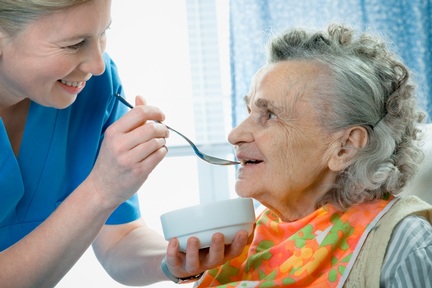Council funded care homes only spending £2.44 on residents' meals
The average daily food cost for a resident in a council-funded care home is £2.44, according to research by Sheffield Hallam University.

Norman Dinsdale, a former chef and senior lecturer in hospitality management who carried out the research, said: "This is not enough to adequately feed and hydrate a frail dementia patient whose only joy in the day is sitting down for something to eat."
Mr Dinsdale has spent over forty years in senior positions within the hospitality industry and undertook the research after several of his relatives and close friends needed specialist dementia care within a residential setting.
He said: "I was devastated to see several members of my family and extended circle of friends living and dying with dementia, some in care homes.
"Selfishly I feared that this might happen to me and the thought of an existence living on what I consider to be sub-standard food and service was not something I wished to contemplate, hence my interest in this area.
"For people living with dementia, nourishing food and drink is an essential requirement. I found there was plenty of information on nutrition, dietetics and nursing but zero on how caterers and nutritionists should work together."
Caterers and managers at nine residential care homes were interviewed, and it was discovered the average care home spend of £2.44 a day on food and drink for residents fell well below the £3.29 recommended in 2008 for an average council-funded care home.
At homes where residents were self-funding, residents had the highest food and beverage budget. One of these homes even included an allowance for wine with meals.
The researcher felt council-funded homes were mainly concerned with getting the food plated up and put in front of residents, and this was regardless of whether or not they were hungry.
He also suggested more consideration about the physical environment in which patients ate and the use of blue plates and red beakers to encourage residents to eat and drink more.
Mr Dinsdale said: "The aim of my research was to understand how caterers can improve the services they offer in care homes whilst improving and maintaining their competitive edge; their unique service propositions and their profitability; and also, to find out what steps are being taken in terms of creativity and innovation.
"Ultimately what I want is for more care homes to introduce better systems so they can give the residents more to look forward to and improve their quality of life."
Latest News
 29-Jul-24
Dementia Bus gives carehome.co.uk staff insight into life with dementia
29-Jul-24
Dementia Bus gives carehome.co.uk staff insight into life with dementia
 01-Mar-24
Find out the top care homes in 2024
01-Mar-24
Find out the top care homes in 2024
 21-Mar-23
UK's top care homes in 2023 revealed
21-Mar-23
UK's top care homes in 2023 revealed
 03-Jan-23
carehome.co.uk launches free care helpline
03-Jan-23
carehome.co.uk launches free care helpline
 13-Dec-22
5 mins with Emily Whitehurst, chief operating officer for Constantia Healthcare
13-Dec-22
5 mins with Emily Whitehurst, chief operating officer for Constantia Healthcare